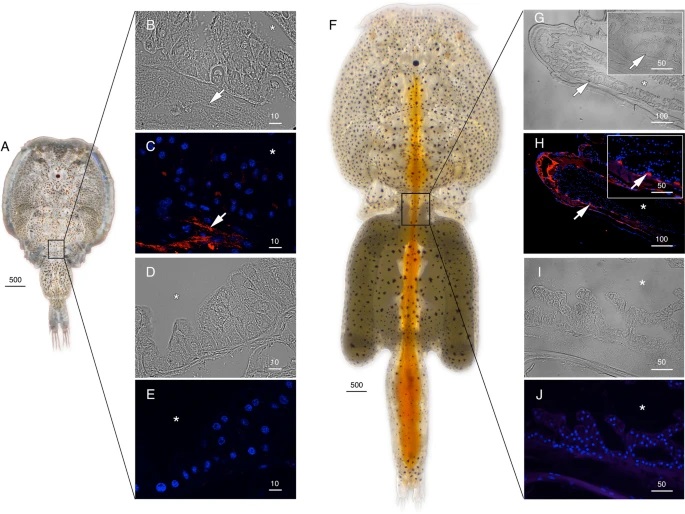Communications Biology volume 4, Article number: 643 (2021)
https://doi.org/10.1038/s42003-021-01921-9

Abstract
Transmembrane conductance of small uncharged solutes such as glycerol typically occurs through aquaglyceroporins (Glps), which are commonly encoded by multiple genes in metazoan organisms. To date, however, little is known concerning the evolution of Glps in Crustacea or what forces might underly such apparent gene redundancy. Here, we show that Glp evolution in Crustacea is highly divergent, ranging from single copy genes in species of pedunculate barnacles, tadpole shrimps, isopods, amphipods and decapods to up to 10 copies in diplostracan water fleas although with monophyletic origins in each lineage. By contrast the evolution of Glps in Copepoda appears to be polyphyletic, with surprisingly high rates of gene duplication occurring in a genera- and species-specific manner. Based upon functional experiments on the Glps from a parasitic copepod (Lepeophtheirus salmonis), we show that such lineage-level gene duplication and splice variation is coupled with a high rate of neofunctionalization. In the case of L. salmonis, splice variation of a given gene resulted in tissue- or sex-specific expression of the channels, with each variant evolving unique sites for protein kinase C (PKC)- or protein kinase A (PKA)-regulation of intracellular membrane trafficking. The combined data sets thus reveal that mutations favouring a high fidelity control of intracellular trafficking regulation can be a selection force for the evolution and retention of multiple Glps in copepods.
